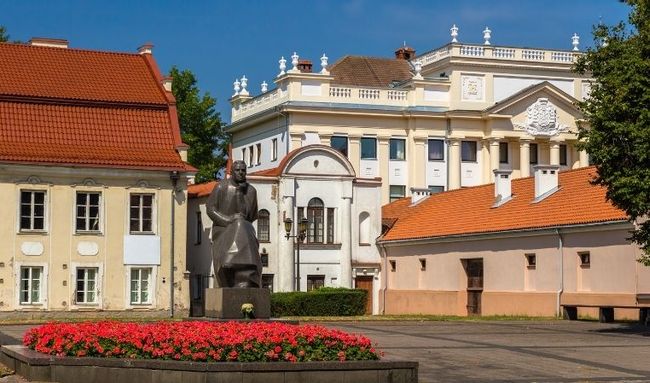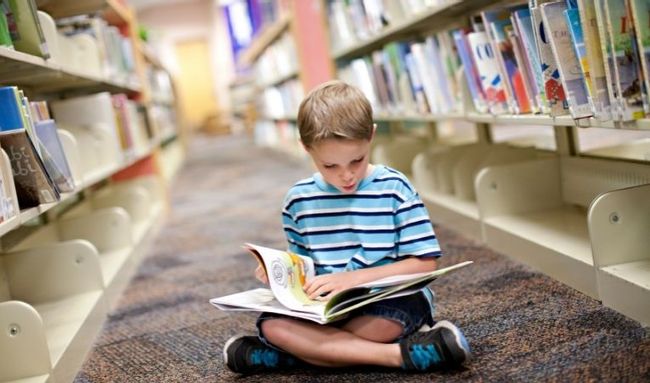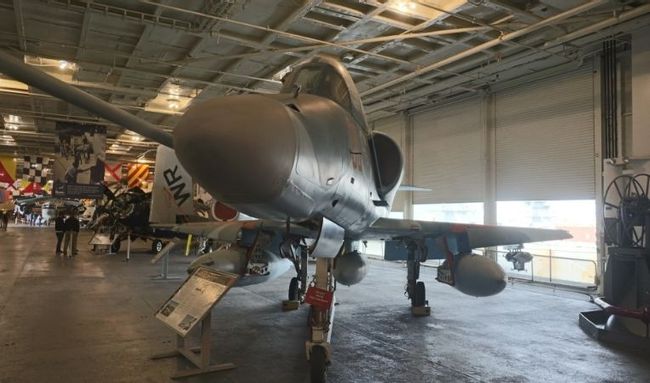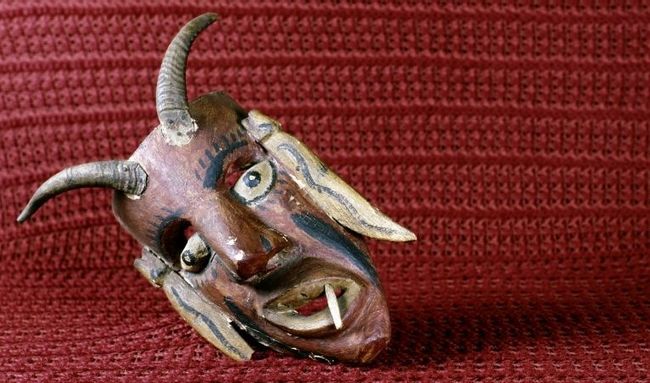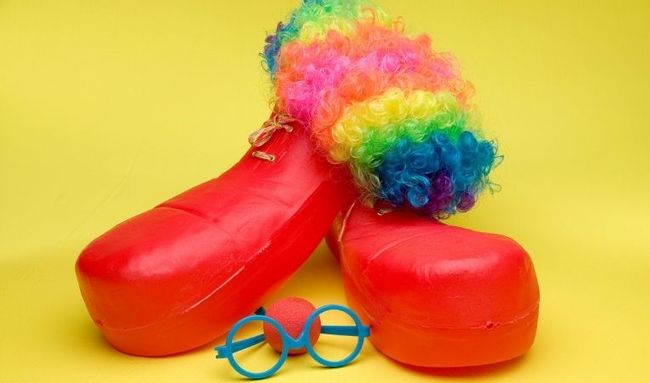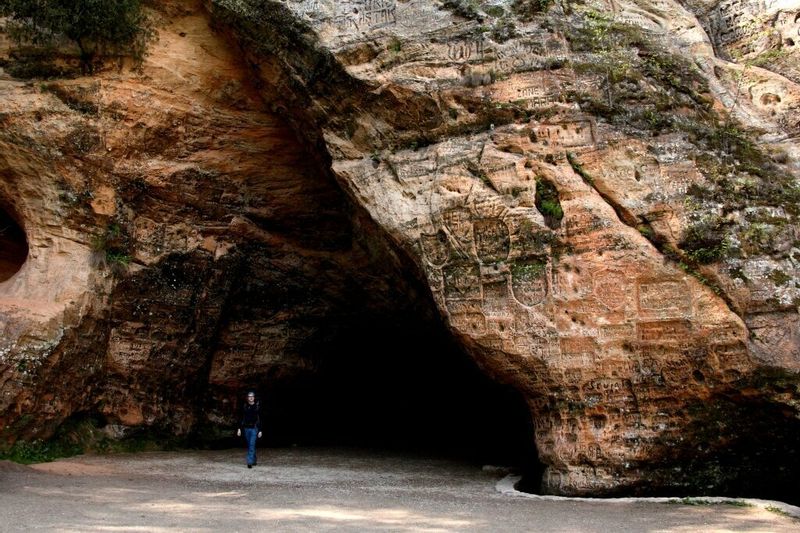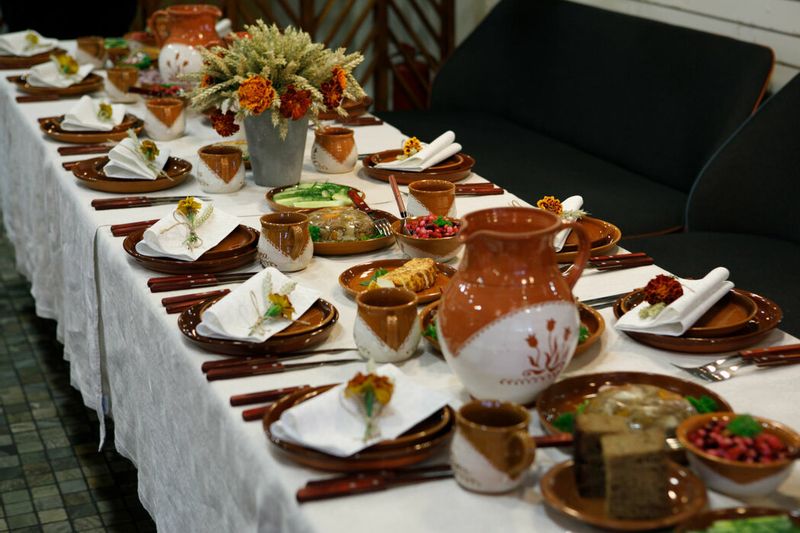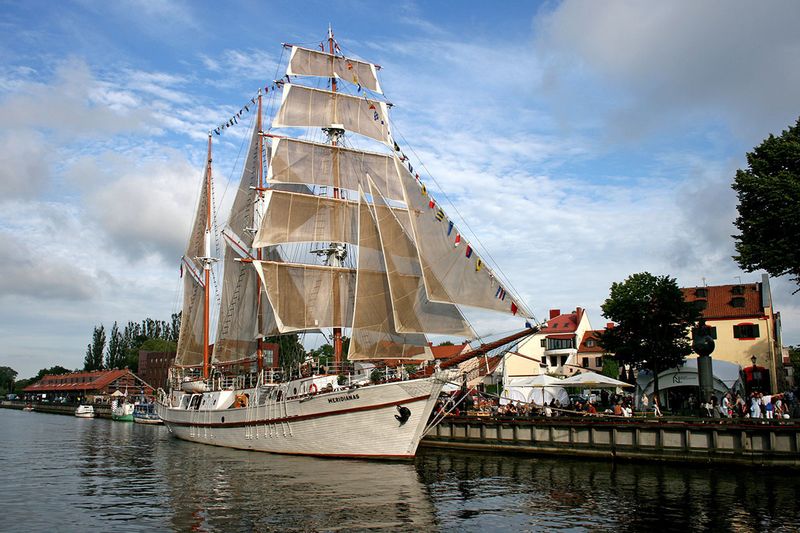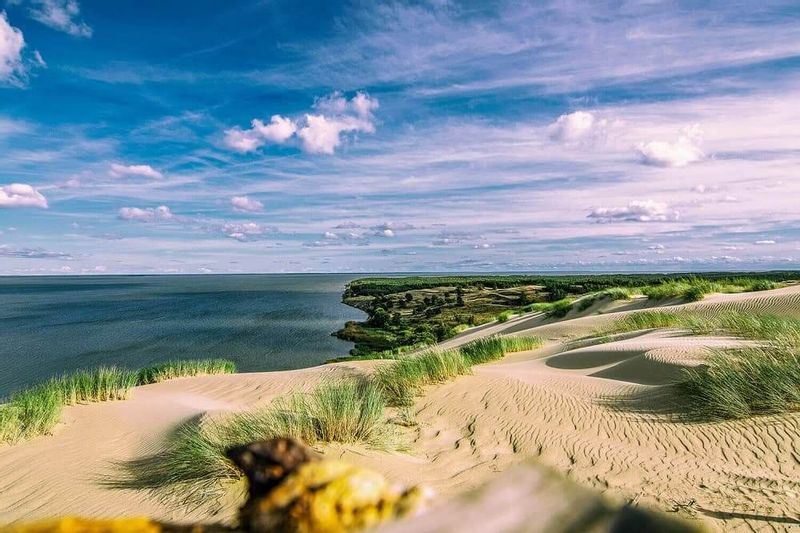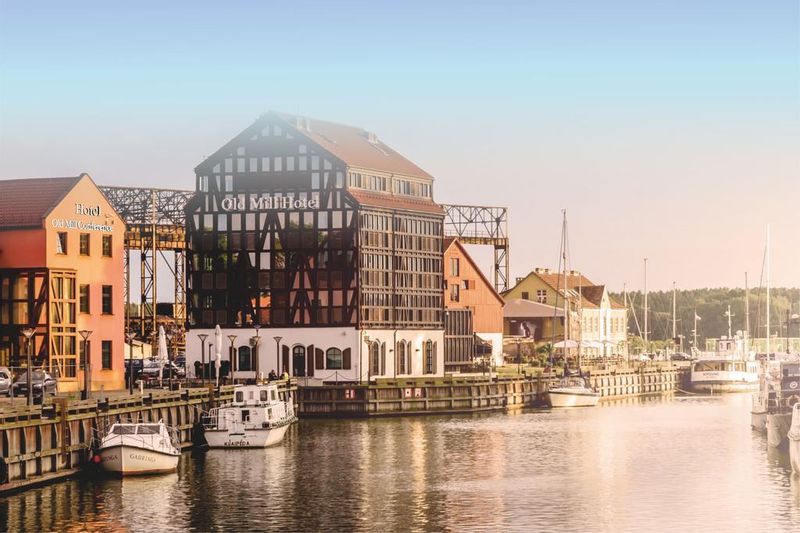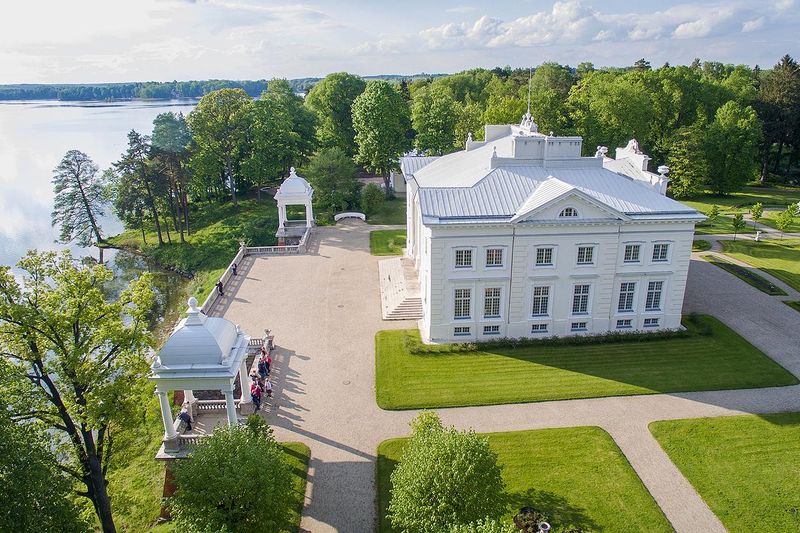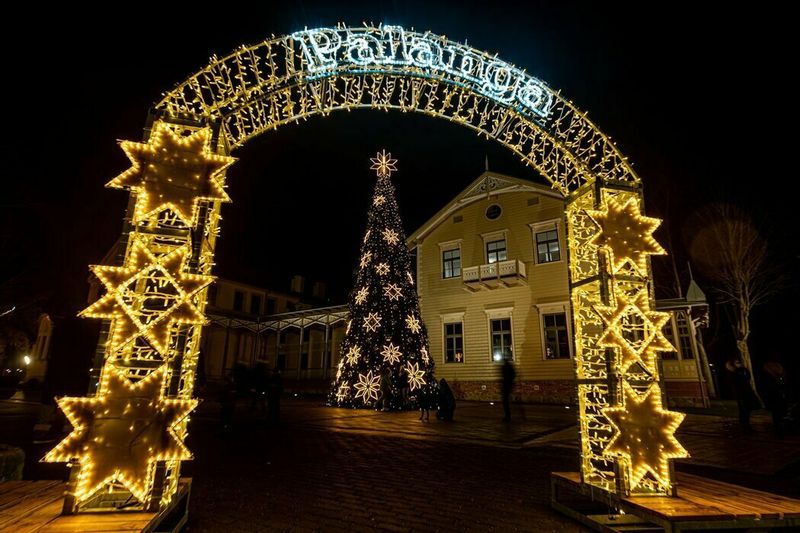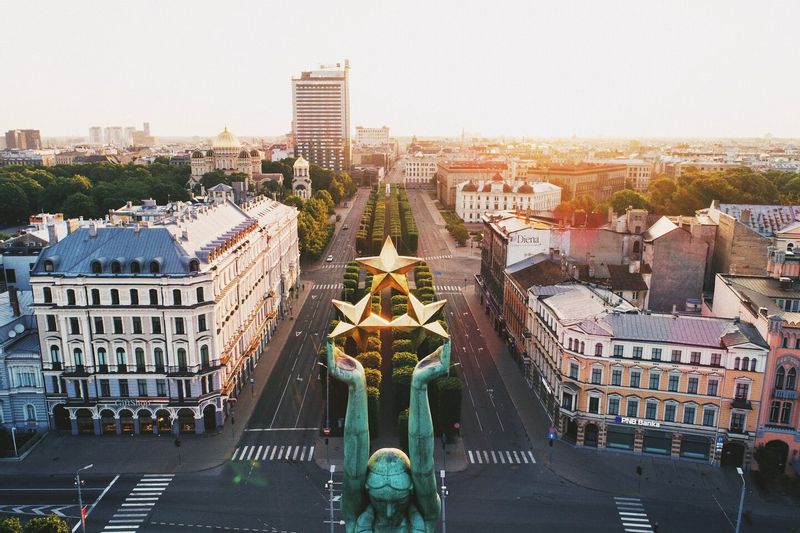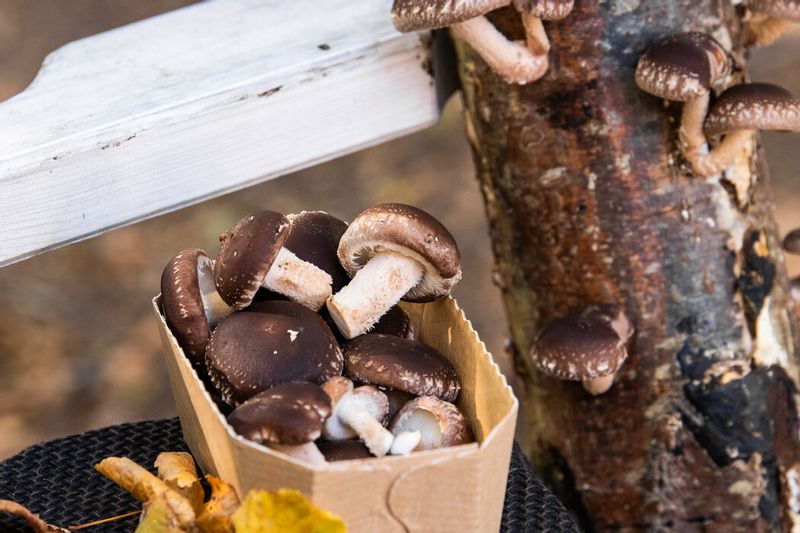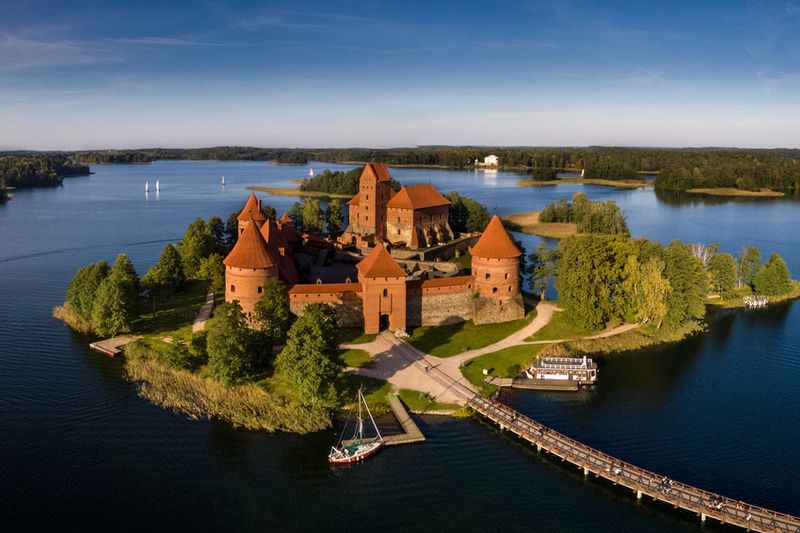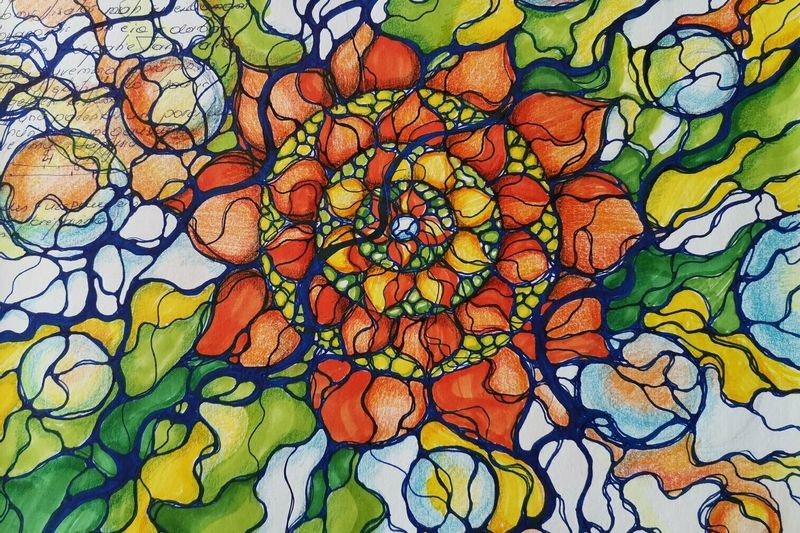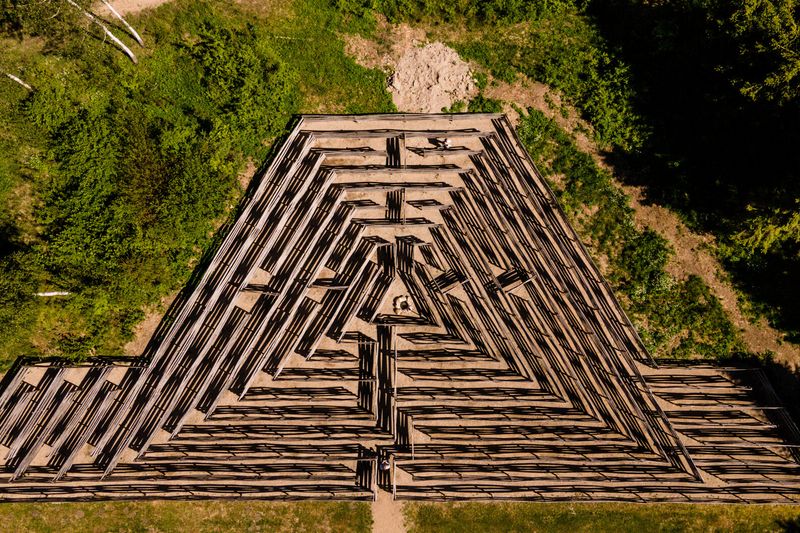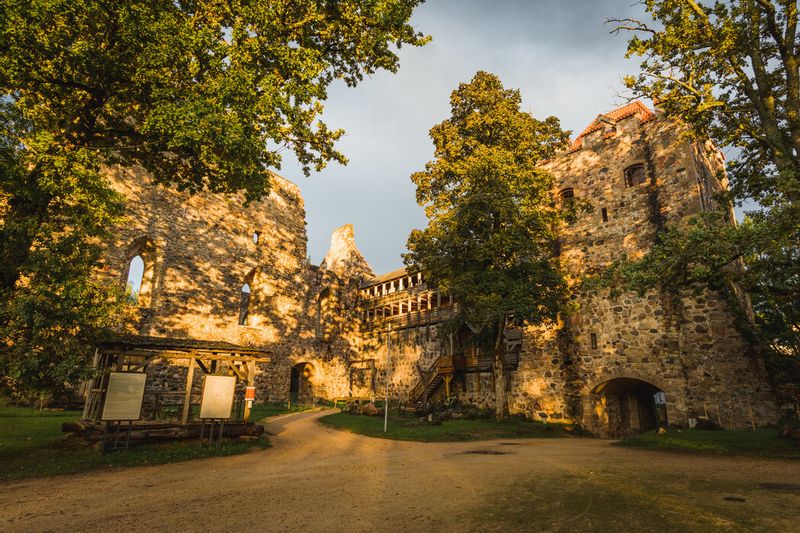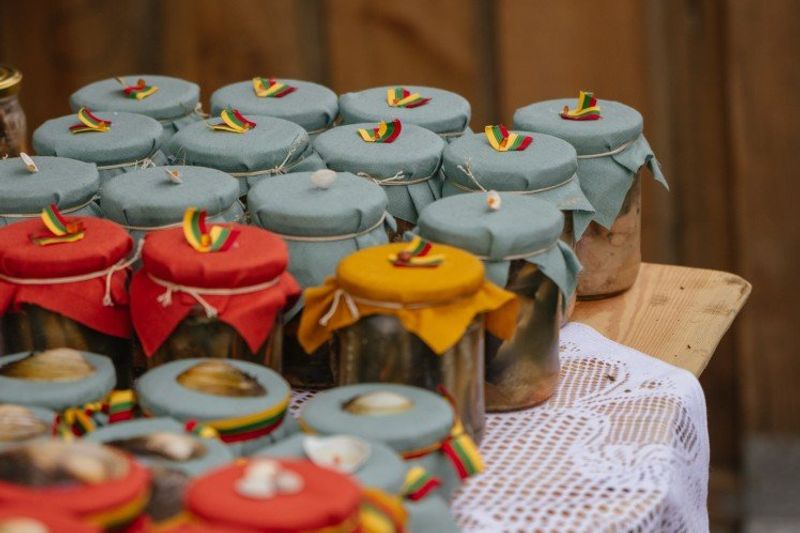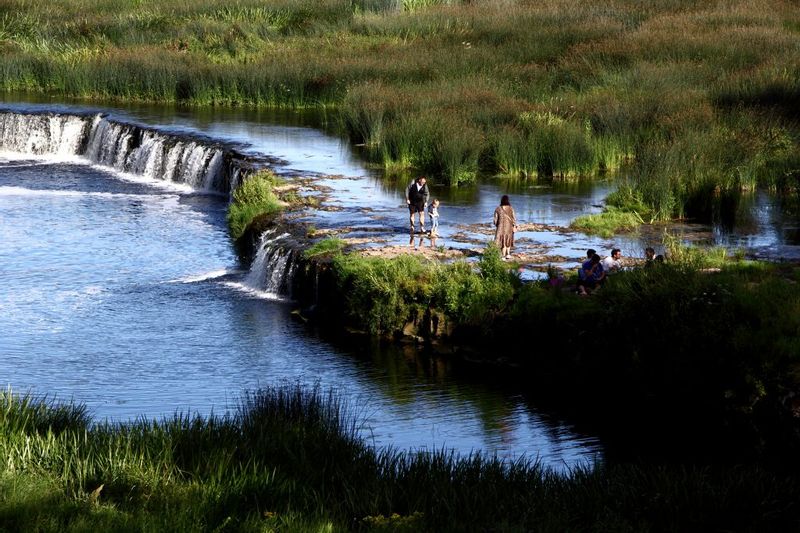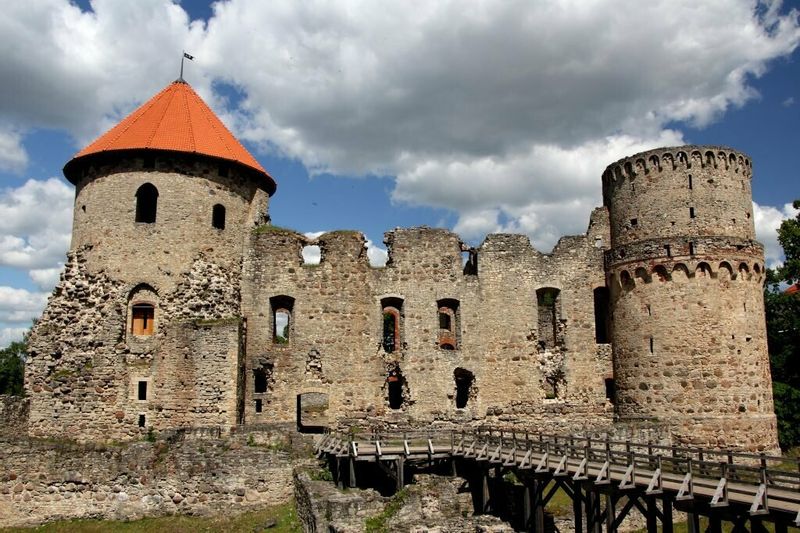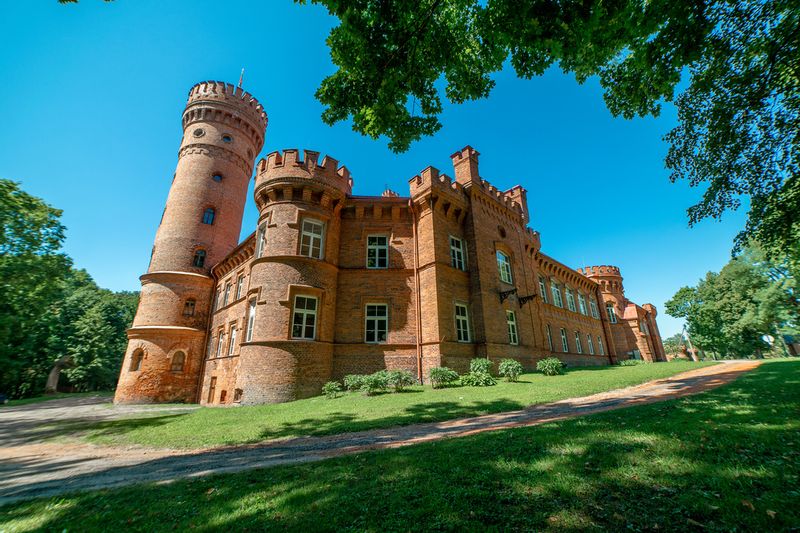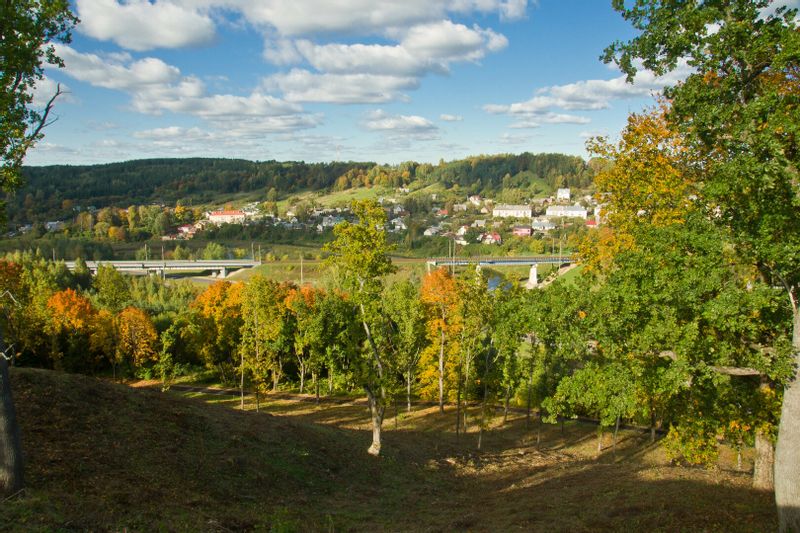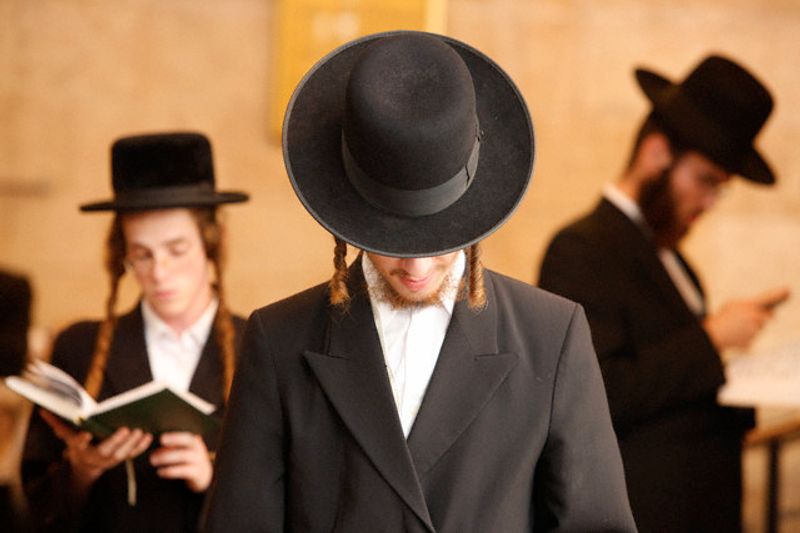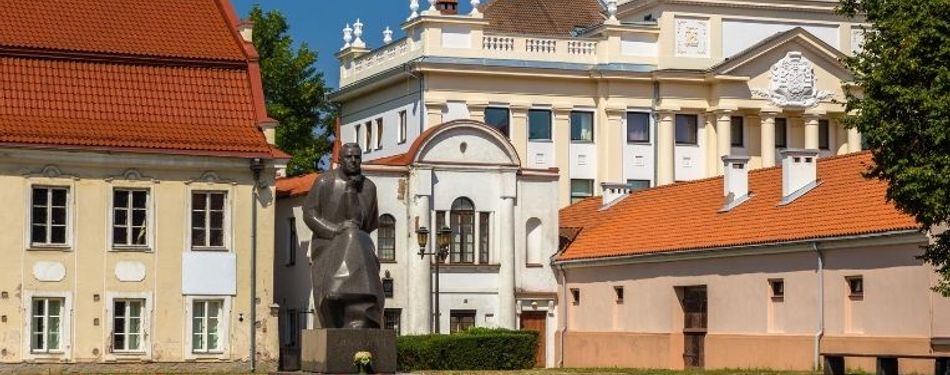
- Published 2023 m. January 26 d.
- Category My trips
- Fausta, Ieva
Museums in Kaunas: have you already visited the most interesting places?
The city of Kaunas has many cultural spaces, artistic initiatives, interesting and interactive places to spend your free time. It is not for nothing that Kaunas last year had been declared as the European Capital of Culture. But most people still think that a museum is a boring, fact-filled place where nothing can be touched. However, as the times and our needs change, so do the spaces we visit. Today, the museum is a place that stimulates knowledge and imagination, it‘s a place full of games, puzzles, education and interesting objects, that can be touched and interacted with. So, which museums in Kaunas are worth your time and money? Here is a list of museums that will leave you with a memorable experience.
Museums in Kaunas
1. National M. K. Čiurlionis Art Museum
When visiting Kaunas you must visit this museum in order to get to know the cultural and artistic heritage of this city.
M.K. Čiurlionis needs no introduction. Probably every Lithuanian has heard this name and seen, read or listened to at least one of his works. M.K. Čiurlionis name resonates outside Lithuania as well, thus gathering many fans all over the world.
Therefore, everyone must visit this museum at least once and get to know (if you don't already know) the works of this author more closely. In the museum you can not only see the painting and graphic works of this genius, but also listen to recordings of this composer's music.
The museum (founded in 1921) is one of the oldest and largest art museums in Lithuania! Nowhere else in the world will you find so many M.K. Čiurlionis' works: 227 paintings, graphic works, drawings, musical manuscripts, letters. Cultural events and educational programs for children are also organized here.
The expositions in the museum gives the visitors an opportunity to immerse themselves in the music-filled works of art of Čiurlionis and to deeply empathize and feel the work of this artist. After all, being a true romantic, he was interested in nature and man's relationship to it, was searching for the meaning of life, studied the psychological state of people and was always looking for ways to fit musical expressions into paintings.
Usually, every last Sunday of the month, the museum is free.
2. Sugihara's house
Those who are interested in the history of the Second World War should get to know Chiune Sugihara, a Japanese diplomat who lived and worked in Kaunas.
During the war, Ch. Sugihara helped many European Jews facing death by issuing transit visas that allowed them to leave LTRS territory. This man's work is a reminder that the noble actions of one person, even if they go against the system, can save many lives.
As you might already suspect, this museum is dedicated in memory of Sugihara. The Asian Studies Center operates in the museum, thanks to the cooperation with Vytautas Magnus University. A publicly accessible reading room is also located here, which collects material about Sugihara, Jew and Kaunas city history.
3. Maironis Museum of Lithuanian Literature
The priest and poet Jonas Mačiulis-Maironis used to live in the building where the Maironis Museum of Lithuanian Literature is located. During the years of Maironis' life, the first floor of the building was a book publishing house "Sakalas", a school of fine arts and the first Lithuanian library and reading room in Kaunas.
The museum was established in 1936, four years after Mairon's death. Museum contains a lot of interesting historical material and facts. You will be able not only to learn a lot about literary topics, but also to get to know and understand the political and architectural changes that took place in the city of Kaunas.
And Maironis apartment-museum, reconstructed in 2016, can offer visitors many interesting, interactive and colorful solutions, thanks to which no exhibition space or information is boring.
This museum also includes the following units: Juozas Grušas house-museum, Salomėja Nėris and Bernardas Bučas house-museum, Balys and Vanda Sruogos house-museum, Juozas Tumos-Vaižgantas apartment-museum, Children's Literature Museum.
4. Historical Presidential Palace of the Republic of Lithuania
When Kaunas was the Temporary Capital of Lithuania, of course, the temporary Presidency was also located in the city. All three Lithuanian presidents of that time worked in this building: Antanas Smetona, Aleksandras Stulginskis and Kazys Grinius.
In this museum you can see the spaces where official diplomatic meetings were held and take a walk around the courtyard of the Palace, where the sculptures of all the aforementioned presidents are displayed.
5. Stumbras Museum
This is almost the only (and the first) strong liquer museum in Lithuania. This museum not only tells about the history of the company and alcohol, but also allows visitors to see for themselves how strong drinks are made in the Stumbras factory.
After the tour, visitors are invited to alcoholic beverages tasting.
6. Installation of the Blind
Located in the very heart of the city, the museum is unique in that it focuses not on information, but on experience. Rather, it is a sensory space where visitors can experience for a few minutes what it is like to see nothing and are forced to rely only on hearing and touch.
7. KGB Atomic Bunker Museum
History lovers will be impressed by this museum. It's an impressive collection of surveillance equipment that shines a different light on a well-known era. Some of the devices used by the KGB will be completely unheard of and unseen by you until now.
You'd be surprised at the ways people were tracked and monitored in the system back then. You will also see the largest collection of gas masks in the Baltic States!
8. Museum of Anatomy
100 years ago, the Museum of Anatomy was opened in Kaunas. Its doors were opened by the founder of the Institute of Anatomy, creator of Lithuanian anatomy, prof. Jurgis Žilinskas. Currently, it belongs to the Lithuanian University of Health Sciences.
A dead human body is an important teaching tool for students. Later, these bodies become museum exhibits - the human anatomy is further explored by visitors. One thousand can be seen in the museum. The exhibitions are from human remains: various organs and skeletons. You can even see a fetus in the womb! Most of the exhibits were collected in 1922-1940. The museum also has parts of animal anatomy: mammoth bone, horse skulls, whale vertebrae, dog, sheep and gorilla skeletons.
How did the museum collect this type of exhibits? Until the restoration of independence, the remains of unidentified people were brought to the university. Skeletons found during expeditions and constructions also found their way at the Museum. There were also people who agreed to donate their bodies to science after death. To this day, this is the only remaining method of obtaining human remains for science.
The museum is designed to get to know the human body. People with an extremely sensitive psyche are advised to think before visiting the museum whether these images will not shock them and the children who came with them. Both organized groups and individual people can come to the Museum of Anatomy.
9. Kaunas City Museum, Folk Music Branch
The national music department presents contemporary Lithuanian traditional music, cultural context of folk music, old Lithuanian musical instruments. You can sing, view video clips of post-folk artists. In the yard, there is a 16th century eye-catching gothic style building, which contains national musical instruments.
Concerts are organized in the department every year, once a month - evenings of traditional dances.
Museums for children
The Children's Literature Museum is an interactive, interesting and fantasy-stimulating museum, where children will not only learn new things about literature, but will also have the opportunity to immerse themselves in the world of riddles, fairy tales, music and games.
The Lithuanian Museum of Aviation is one of those that you must take your children to. Children for sure are going to be mpressed by the museum's large number of exhibits, including gliders and large aircraft, as well as a replica of the Lituanica that was made for the film Crossing the Atlantic. The museum also organizes education for children.
Vytautas the Great War Museum is one of the oldest museums in Lithuania (founded in 1918). This museum is a great example of how museums are able to respond to the changes of time and society. Here you will get to know the history of world armaments, you will find many interesting exhibits from all over the world. For children, the museum offers many interesting educational programs: from battles with combat tools of different eras (bow, crossbow, musket), strategic video games to educational videos. The museum engages the visitor in such a way that he wants to return over and over.
Devil‘s Museum is a collection by the artist A. Žmuidzinavičius. This museum consists of two parts: first, the exposition of the A. Žmuidzinavičius memorial house, the museum of his works and collections, and the second - located in a separate annex. This is an exhibition that has no analogues in the world, where more than 3 thousand devils are stored, which are collected from 70 countries of the world. The museum organizes holidays, excursions and educational programs for children, during which children can learn about world mythological folklore, hear "devilish" tales. If you decide to visit this museum, it's worth knowing that museum visitors often bring a devil as a gift to the museum!
An exhibition that must be interesting for both children and adults is the Baltic Circus Clown Museum. The founders say they have about 2,000 exhibits, which came both from neighboring countries and from countries far away from Lithuania. The exhibition consists of the artists' personal belongings, documents, costumes, posters and you will also find clowns made of various materials: from small to large, from glass to fabric. This museum is also happy to receive your "clown", so if you have a clown at home that you are ready to say goodbye to - donate it to the museum!
If your child is interested in animals and biology visit the Tadas Ivanauskas Museum of Zoology. The child will be able to get to know many different types of animals and exhibits. Among other things, it is the only zoological museum in the Baltic States. It also hosts scientific and educational activities.
Free museums in Kaunas
"Ab" printing house
It is a cultural object belonging to the Vytautas the Great War Museum. Brief history: In 1979, Vytautas Andziulis (printer) set up a secret printing press in the basement of his home, which printed patriotic publications during the Soviet era.
In this museum you will find press equipment, publications of the underground press, documents of the anti-Soviet and anti-Nazi struggle. Since 2008 this printing house-museum is included in the “Historically valuable installations and sites from the Cold War period”.
Free museums in Kaunas on Sundays
Museums in Kaunas accept visitors for free only on the last Sunday of the month, but remember that this applies only to those museums that are under the authorities of the Ministry of Culture. You may have already heard that all national and republican museums in Lithuania are free every last Sunday of the month. Even those museums that are usually closed on Sundays open their doors to visitors on the last Sunday of the month.
National museums in Kaunas that admit visitors for free on the last Sunday of the month:
- Kaunas IX Fort Museum
- Žmuidzinavičius Creations and Collections Museum
- Devils' Museum
- Historical Presidential Palace of the Republic of Lithuania
- Lithuania's education history museum
- Museum of Lithuanian aviation
- Maironis Lithuanian Literature Museum
- Vytautas the Great War Museum
Also, some museums in Kaunas can be accessed for free thanks to virtual tours. For example, the Tadas Ivanauskas Zoological Museum has a well-prepared and detailed free virtual tour for its visitors. A similar opportunity is provided by the Lithuanian Sports Museum.
By the way, the following groups of people can visit the expositions of almost all museums for free: preschool children (up to 7 years old), orphans and children without parental care, people with disabilities and their accompanying persons, senior citizens (over 80 years old), Family card holders.
